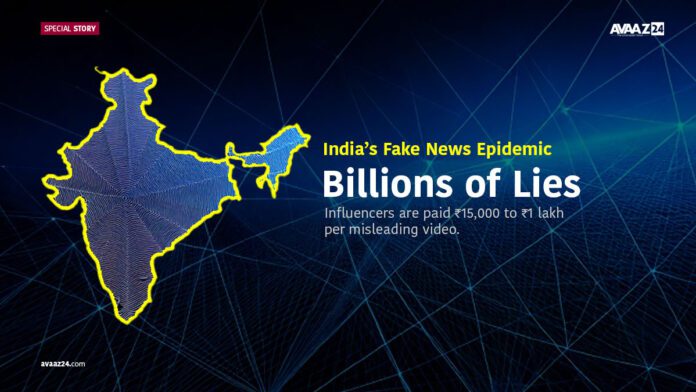In a country of over 1.4 billion people, information travels faster than light but so does misinformation. India today stands as one of the largest creators and consumers of fake news worldwide. From WhatsApp forwards to YouTube videos, from Facebook pages to influencer reels, the ecosystem of misinformation is thriving, often unchecked.
But how did we get here? Who benefits from this chaos? And most importantly, what does the data tell us about this disturbing trend?
The Manufacturing of Misinformation
Misinformation in India isn’t always a result of innocent mistakes. It’s a well-oiled machine with various players — political groups, extremist factions, digital marketing agencies, and even “news” outlets masquerading as legitimate sources.
According to a 2023 report by Microsoft, India ranked first globally in the exposure to fake news, with nearly 52% of respondents admitting they encounter misinformation at least once a day.
Meanwhile, a 2024 study by the Internet Freedom Foundation (IFF) revealed that political propaganda makes up 37% of the misinformation circulated during election seasons.
The strategy is simple but powerful:
Step 1: Create emotionally charged content typically around religion, nationalism, or public fears (health crises, security threats).
Step 2: Distribute via “virality machines” WhatsApp groups (some with over 200,000 members via chain-sharing), Telegram channels, Facebook groups, and increasingly, short-form video apps.
Step 3: Use algorithmic amplification hashtags, bots, and paid promotions push this content to trending status, giving it an appearance of legitimacy.
Social Media: The Battlefront
India has over 487 million social media users (Statista, 2024). Platforms like Facebook, WhatsApp, Instagram, Twitter (now X), and YouTube act as both battleground and breeding ground.
WhatsApp: Over 2 billion messages daily in India alone, with encrypted forwarding making it difficult to trace sources. Even though WhatsApp capped forwarding limits, coordinated groups bypass this by using multiple admins and cross-platform sharing.
YouTube: Over 462 million users in India consume content monthly. Fact-checkers report that videos with false claims about politics or communal violence often gather millions of views before moderation can act.
Facebook and Instagram: Meta’s transparency report revealed India as the country with the highest content restriction requests globally, largely due to political content violations.
The Money Behind Misinformation
Fake news is not just ideological. It’s a business.
An investigation by the BBC in 2024 found that influencers and “news channels” on YouTube were being paid anywhere between ₹15,000 to ₹1 lakh per video to spread targeted misinformation. On Facebook, a paid promotion of just ₹2,000 can reach up to 100,000 people in select regions.
During state elections, these numbers spike dramatically, as political consultancies run parallel campaigns of disinformation to sway voters.
The Real-World Impact
Riots and violence: States like Delhi (2020 riots) and Manipur (2023 ethnic clashes) saw a direct correlation between the spike in inflammatory social media posts and outbreak of violence.
Public health: During the COVID-19 pandemic, a University of Michigan study found that 33% of health misinformation on Indian platforms led directly to harmful behaviours, such as misuse of home remedies or vaccine hesitancy.
Elections: In the 2019 Lok Sabha elections, fact-checking agencies like AltNews and Boom Live documented over 400 viral fake stories in just three months, predominantly favoring certain political narratives.
Fighting Back: A Flicker of Hope
India’s fact-checking ecosystem is growing, but it faces an uphill battle. Organizations like AltNews, Boom, Factly, and Quint’s WebQoof are debunking hundreds of false claims weekly. However, they are often outpaced by the sheer volume of misinformation.
The government too, while making some efforts like the IT Rules 2023 and “fake news takedown” provisions, has been criticized for selectively targeting content.
What’s clear is this: while digital literacy improves and platforms enhance moderation, community vigilance remains the first line of defense.
The Choice is Ours
Misinformation is not just an Indian problem but the scale in India makes it especially dangerous. It distorts democracy, erodes trust in institutions, and sows societal divisions. As we head into another election season, the responsibility lies with each of us to question before we share, verify before we believe.
Because in the war of truth versus falsehood, every click counts.


